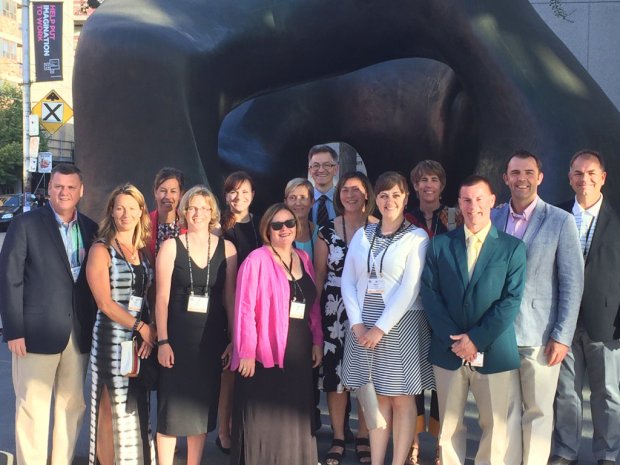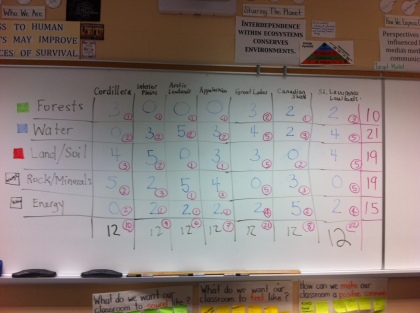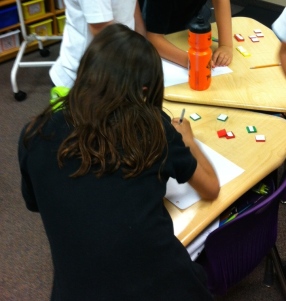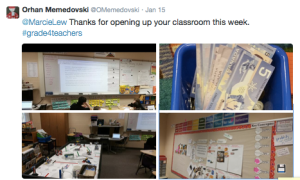This year was my first time being the lead teacher on the PYP Exhibition at my school. In the past two years I have served as a mentor, but this year was my opportunity to step up and take on the leadership of the PYP Exhibition.
I was fortunate to be supported by my school to attend ‘The Exhibition (Category 2)’ training the face-to-face format. I found that attending the training was beneficial to fully understanding the purpose of exhibition both in my role as a homeroom teacher but also as the PYP Coordinator. ‘
Lesson #1 – The Exhibition is the responsibility of all teachers within the programme.
The Exhibition is the culmination of the PYP, and as a result, it is a reflection of everything that the students have developed as learners throughout the programme, not only in the final year. Often, the teacher who is responsible for leading the group of students through the exhibition feels an added level of pressure as they are directly responsible for the group of students. Taking time to establish essential agreements and understandings around the purpose of exhibition and the scope of exhibition will help to lay the ground work for meaningful conversation regarding student’s exhibition experience.
Lesson #2 – Invest in developing a detailed timeline in advance, but remain flexible!
There is no prescribed way to deliver the PYP Exhibition; however, there are many requirements as describe in the Exhibition Guidelines document. As a result, it is important to carefully consider what components of the exhibition process are required and allocated appropriate time and resources for them. Providing time for students to take community visits, have guest speakers, contact primary resources are all important elements to student led inquiry and all benefit from having a timeline. That being said, it is important to remain flexible and consider individual situations with professional judgement as learning is not a linear process.
Lesson #3 – Build in time and provide tools for reflection throughout the process.
In order to help keep the focus of the exhibition on the process of learning, instead of completely on the final product, make sure to build in non-negotiable time for reflection. Some of the ways that it did this included:
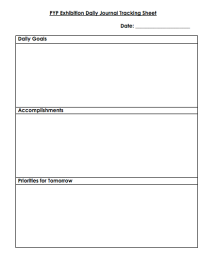
Daily Tracking Sheet
• Daily tracking sheets – Students take a few minutes at the beginning and end of every day to set priorities, acknowledge progress, and identify next steps.
• Weekly recap sheets – Each Friday, students had time to reflect on their week by answer open-ended questions and identifying the Learner Profile attribute, attitudes, and Approaches to Learning that they displayed, utilized, or applied that week.

Open Ended Questions
• Video Journals – At the completion of various stages of the inquiry process, students were provided with the same set of questions to answer. This was done multiple times and then students were able to look at how their answers were impacted by their research. By using the video format, it provided another modality for students to express themselves and talk about themselves as learners.
Lesson #4 – Communication is essential.
As the exhibition unit is a slightly different format from the rest of the programme of inquiry, it is essential to develop strong communication with the involved students, families, and wider school community to maintain a positive climate. It is important to acknowledge that exhibition will challenge the students involved, and there will be difficult situation to work through but at the core the process will be empowering and enjoyable for the students involved.
Lesson #5 – Document, document, document!
Take lots of pictures, shoot video, capture the learning in action. The exhibition process can be exhausting, overwhelming, and is over before you know it. Make sure to use technology to assist in the documentation process to help you remember all of the wonderful moments that happened throughout. Your documentation will be valuable to help with the assessment process, but also provides a vehicle for celebration.
Here is a video produced with some of my students talking about PYP Exhibition.
If you have other lessons that you have learned about PYP Exhibition, please comment below! We are better together, when we share and learn from each other.
